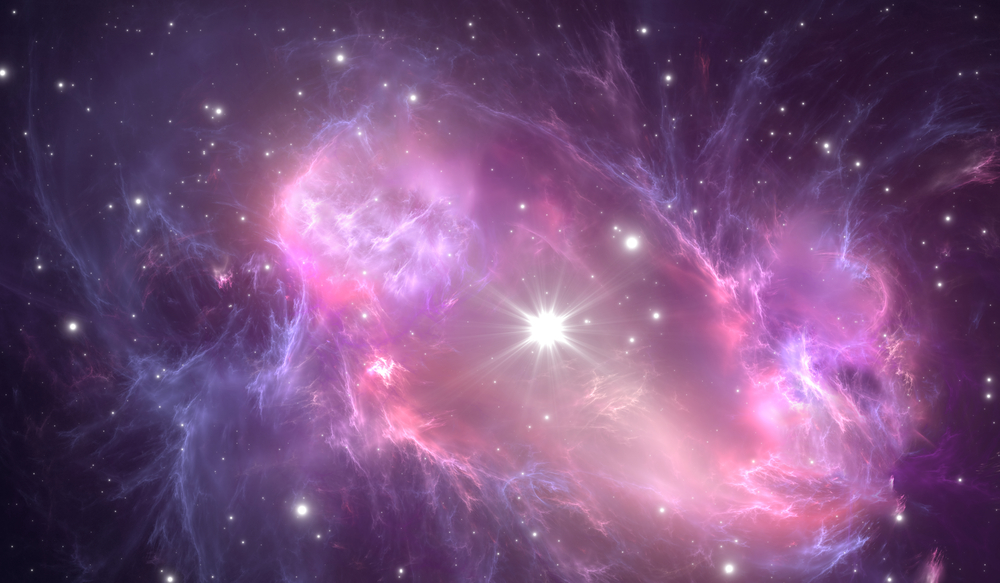
A dynamic form of dark energy may explain strange radiation signal from the early universe
We may have already found evidence of an evolving, dynamic kind of dark energy from the first stars in our universe.

Dark energy, the mysterious entity that dominates the energy of the cosmos and appears to be accelerating the expansion of the universe, presents a cosmic conundrum for scientists.
In short, cosmologists have no idea what dark energy really is. So they are concocting all sorts of possible models, and exploring the observational consequences of those models, in hopes of finding some clue as to what dark energy is and how it works.
Now, new research suggests that we may have already found evidence of an evolving, dynamic kind of dark energy, in the form of the radiation emitted when the first stars appeared in the universe.
Billions of years ago, the universe was much darker than it is today. It took time for the first stars and galaxies to coalesce and appear, and when they did, they completely transformed the cosmos.
Related: The history of the universe from Big Bang to now in 10 steps
Prior to the formation of the first stars, the universe was dominated by a thin fog of neutral hydrogen and helium gas. That gas had formed during the momentous epoch known as recombination, a stage that occurred when our universe was 380,000 years old and had cooled to the point where the hot plasma could become neutral — when electrons could finally bind to nuclei to form the first atoms.
When the first stars ignited, however, their intense radiation ripped through the neutral gas, turning it back into a plasma state. And so cosmologists named the appearance of the first stars the "Cosmic Dawn" and the subsequent dramatic phase change of the universe the "Epoch of Reionization." These events occurred around a few hundred million years after the Big Bang.
Breaking space news, the latest updates on rocket launches, skywatching events and more!
We do not yet have any direct measurements or maps of the cosmological epoch when the first stars and galaxies formed, or of the Epoch of Reionization. The main challenge is that these events occurred an extremely long time ago, so the light from those first stars is incredibly weak.
An open window
But there is another window into the Epoch of Reionization. Neutral hydrogen emits radiation at an extremely specific wavelength: 21 centimeters (8.3 inches). This is not a strong signal at all, but there was a whole lot of neutral hydrogen back in the day. But that radiation was emitted billions of years ago, and in the intervening ages, the universe has expanded to be about 10 times its previous size. That expansion has stretched the wavelength of that 21-cm radiation, and today, it's now detectable in radio wavelengths.
In 2018, a team of astronomers claimed to have detected the 21-cm signal emitted when the universe was only 230 million years old. But the signal from that radiation was more than twice as strong as theoretical calculations had suggested. Assuming that the observation is valid (which is still a matter of debate, as the result has yet to be replicated by another team), it suggests that something in our understanding of early cosmic history is off.
Most recently, Lu Yin, an astrophysicist at the Asia Pacific Center for Theoretical Physics in South Korea, has suggested a new possibility to explain the strange result.
Dynamics in the dark
Yin's work, published to the preprint database arXiv, explored a model called interacting Chevallier-Polarski-Linder dark energy, or ICPL. In this model, dark energy is not a fixed constant of the cosmos but a dynamical entity that can change and evolve in time, resulting in changes in the acceleration rate of expansion. But that ability to evolve immediately opens up a question: What controls the way dark energy can change? In response, this model allows for dark energy to interact with dark matter; their behavior is linked, keeping both of them in check as the universe expands.
There are more cosmological observations than the 21-cm signal. So, to start, Yin tuned the ICPL model to fit other observations, especially ones focusing on the recent expansion history of the universe. With a tuned model in hand, Yin then simulated the evolution of the early universe. Yin found that this ICPL model caused stars and galaxies to appear earlier than in standard cosmological models, which made the ICPL model better at accounting for the strange observed 21-cm signal compared with traditional cosmological models.
This is an intriguing result, but not a slam dunk. The 21-cm observations are still in dispute, and there are other possible explanations for the strange signal. Still, this shows how scientists can approach observations like this and continue to push into the frontiers of understanding dark energy and dark matter.

Paul M. Sutter is a cosmologist at Johns Hopkins University, host of Ask a Spaceman, and author of How to Die in Space.
